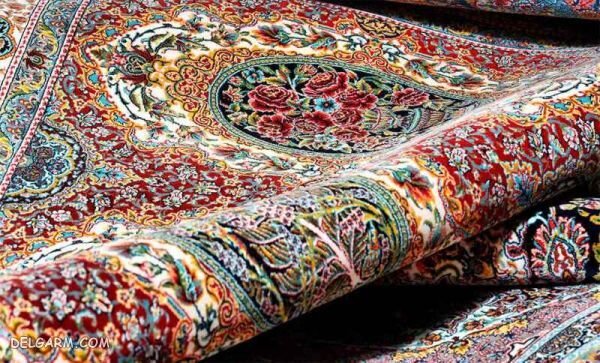Persian carpet: A mirror reflecting Iran’s 2,500-year history

TEHRAN--Each Persian carpet is more than a textile; it’s a vivid reflection of Iran’s rich heritage, artistry, and cultural evolution spanning over two and a half millennia.
For centuries, Persian carpets have woven stories of artistry, heritage, and identity into every thread. More than just floor coverings, these masterpieces embody Iran’s profound cultural tapestry — from ancient craftsmanship techniques passed down through generations to intricate designs that reflect myths, nature, and spirituality, Mehr news agency reported.
Each Persian carpet is a vibrant, living symbol of Iran’s timeless elegance, resilience, and creative soul, connecting past and present in a colorful narrative of human expression.
Persian carpets are much more than exquisite textiles — they are a harmonious blend of artistic mastery, rich historical heritage, and deep spiritual symbolism. Each intricate pattern and vibrant color reflects centuries of cultural storytelling, connecting the artisan’s soul with Iran’s timeless traditions. Woven with precision and passion, Persian carpets serve as a living bridge between past and present, art and faith, beauty and meaning.
Historians believe that the world's oldest carpet is considered to be made under Persian influence, perhaps in a region culturally linked to Persia—like Khorasan (northeastern Iran), or Central Asia, where Persian artistic traditions were dominant.
The tradition of carpet weaving in Iran dates back over 2,500 years, with roots tracing to the Achaemenid Empire and beyond. These carpets were originally created for practical use—providing warmth and comfort in homes—but evolved into masterpieces reflecting regional stories, beliefs, and artistic styles. Each Persian carpet carries a unique blend of motifs, colors, and weaving techniques that are often specific to the region where it was made, such as Tabriz, Isfahan, Kashan, Kerman and Qom.
Among various historical periods, the Safavid era (16th to 18th centuries) marks the golden age of Persian carpet weaving. During this time, under strong royal patronage, especially in cities like Isfahan, Tabriz, and Kashan, the art form reached its peak in quality, complexity, and aesthetic beauty. Iconic masterpieces such as the famous Ardabil Carpet were created in this period, many of which are now housed in world-class museums.
Later periods like the Qajar dynasty (19th century) saw the expansion of Persian carpet production for international trade, with carpets becoming a major export product to Europe and beyond.
The Carpet Museum of Iran
Situated in Tehran, the Carpet Museum of Iran is a prominent institution dedicated to preserving and showcasing Iran’s rich legacy of handmade rugs.
Established in 1978, the museum’s building was designed by Iranian architect Abdol-Aziz Mirza Farmanfarmaian. Its façade is inspired by the structure of a traditional carpet loom, symbolizing the deep connection between the museum and the art form it houses.
The museum features an exhibition hall covering over 3,000 square meters, displaying more than 150 carpets and rugs from across Iran, including pieces from Kerman, Tabriz, Kashan, Isfahan, and other historic weaving centers.
These works span several centuries, providing visitors with a comprehensive understanding of the evolution of carpet designs, patterns, and techniques.
Additionally, the museum houses a specialized library with around 7,000 books in Persian and foreign languages, serving as a valuable resource for researchers, artists, and those interested in the technical and historical aspects of Persian carpets.
The Persian carpet is far more than just a decorative object; it is a living testament to Iran’s artistic genius, cultural depth, and historical continuity. Its role in the world transcends commerce and aesthetics, symbolizing the rich interplay of tradition, identity, and global cultural interaction. As both a work of art and a cultural ambassador, the Persian carpet remains an enduring treasure admired and cherished worldwide.
Renowned worldwide for their intricate designs and exquisite craftsmanship, Persian carpets have become powerful cultural ambassadors for Iran. Beyond their aesthetic beauty, these carpets embody centuries of history, artistry, and cultural identity, making them ideal tools for cultural diplomacy.
Displayed in museums, exhibited at international fairs, and traded globally, Persian carpets foster cross-cultural understanding and appreciation. Through these timeless masterpieces, Iran shares its rich heritage with the world, building bridges of respect and dialogue between nations.
Leave a Comment